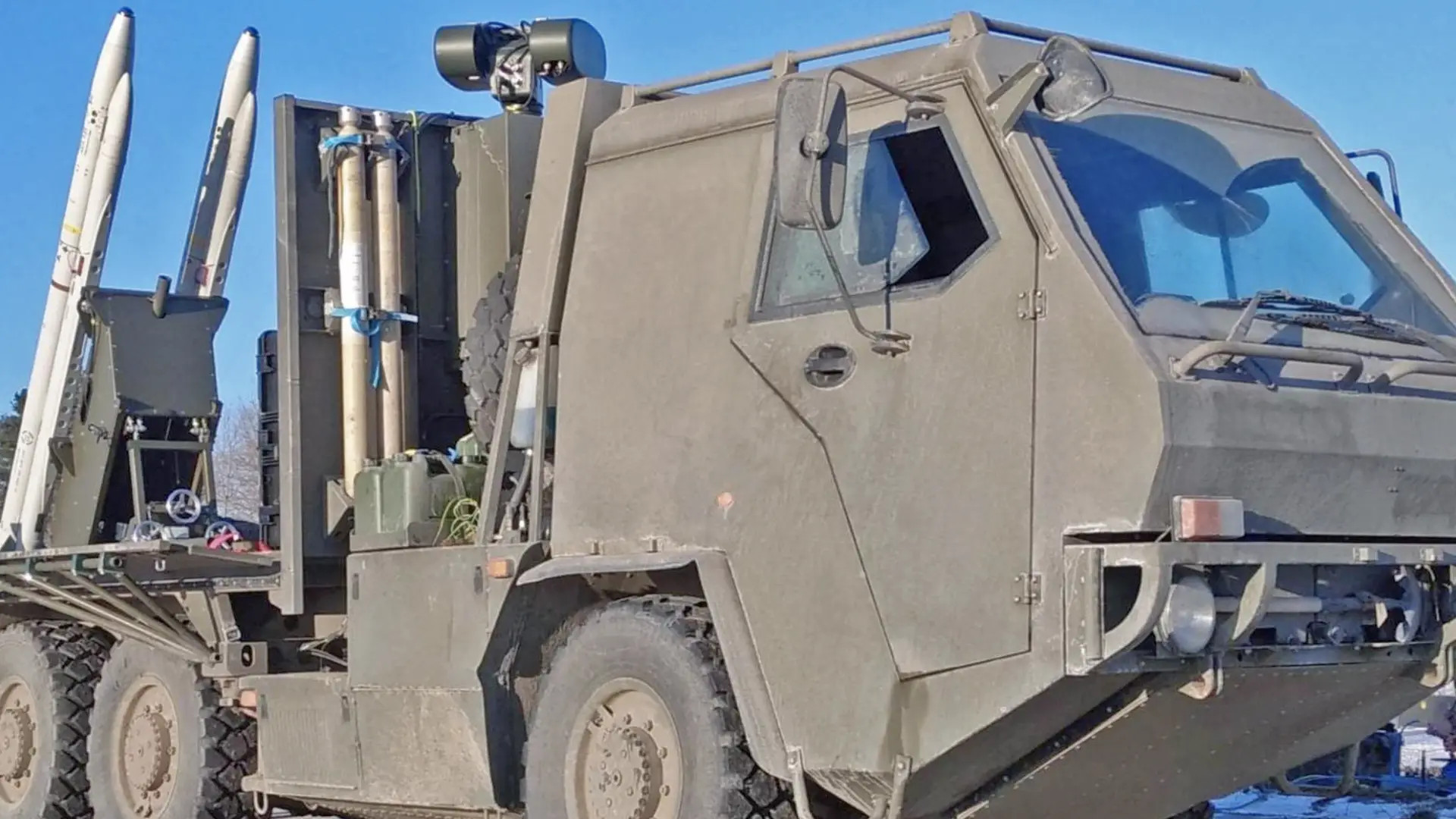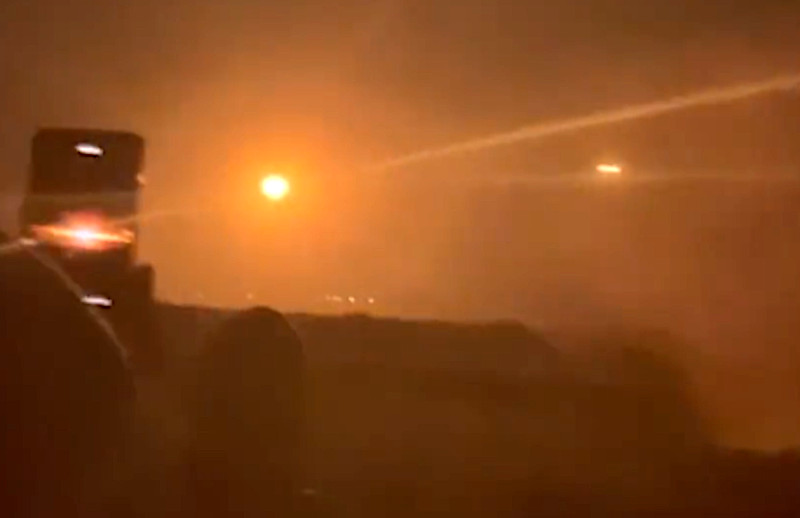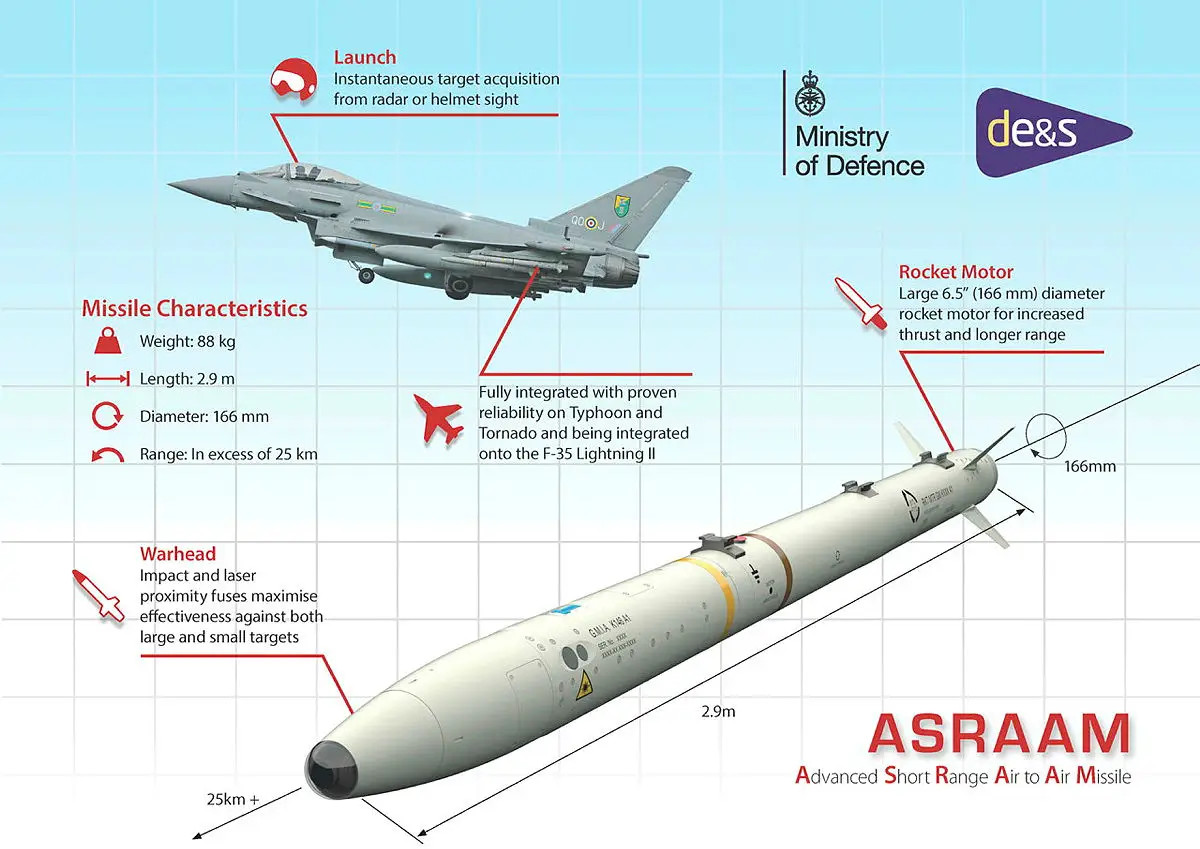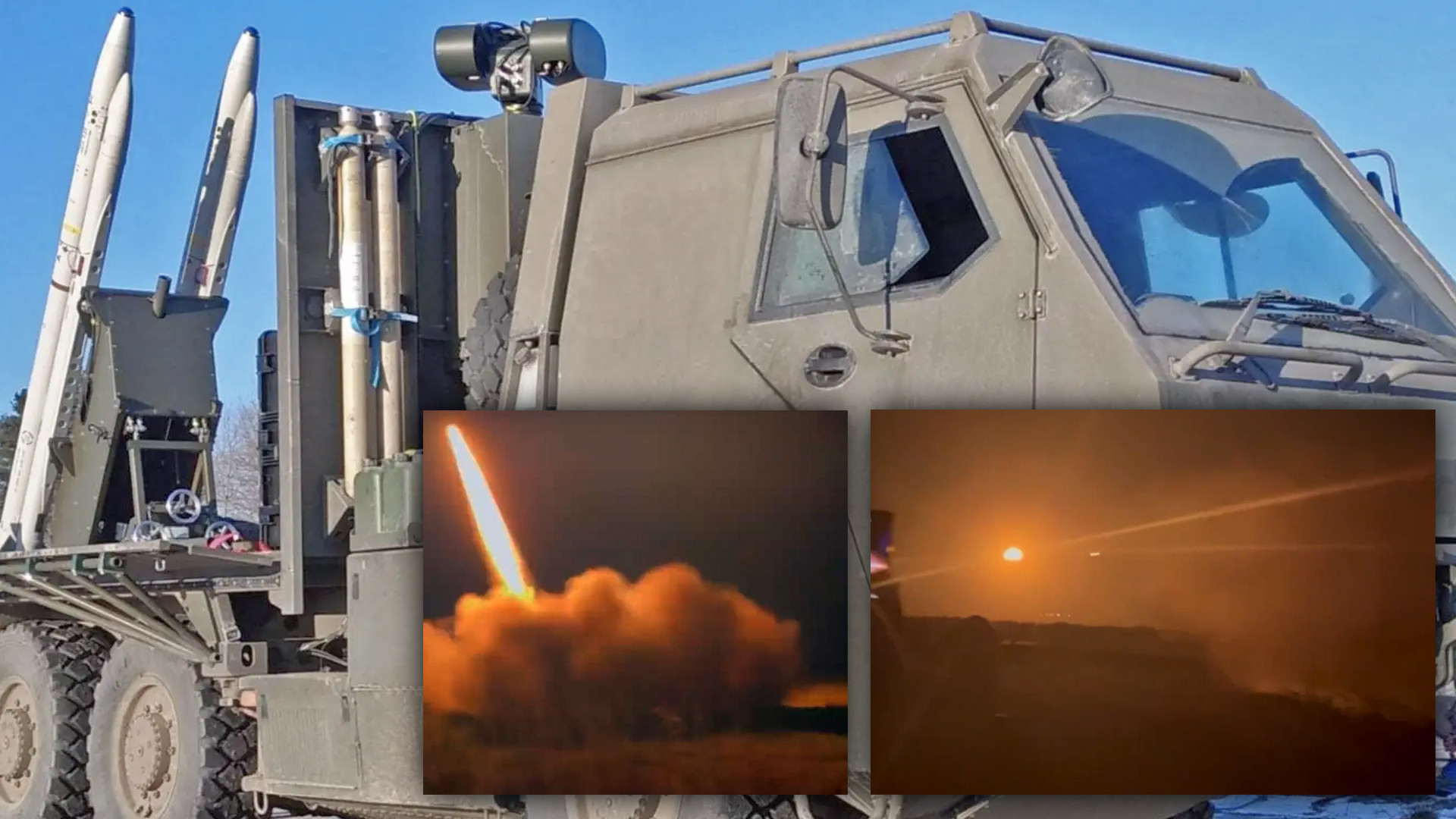We have what appears to be our first look at a unique British-supplied mobile air defense missile system centered on the AIM-132 Advanced Short-Range Air-to-Air Missile, or ASRAAM, in action in Ukraine.
A video emerged on social media that shows an example of the AIM-132-armed surface-to-air missile system emerged on social media, including through official Ukrainian military accounts, yesterday. The clip, seen below, is shot at night, making it hard to identify the system in use, but its distinctive top-mounted sensor turret appears visible at one point.
The infrared-homing AIM-132 has a high off-boresight (HOBS) seeker that helps it quickly find and lock onto targets, even if they are not directly in front of the missile. The missile also has a lock-on-after-launch (LOAL) capability via a datalink, which allows it to receive targeting data from offboard platforms before it even ‘sees’ what it is sent to intercept. The sensor turret on top of the launcher vehicle, which may have a mix of electro-optical and infrared cameras, and even a small radar, is likely used to detect and track incoming threats first and then cue the missile to them.
In addition, the missile seen being fired in the video does not look to be contained inside a launch canister and the point of launch is close to the ground. Along with a distinctive high launch angle and what can be seen of the underlying vehicle, this all aligns with what is known about the AIM-132-based system, the existence of which first became public knowledge in August. You can read more about what is known about the complete system, which is mounted on a 6×6 Supacat High Mobility Transporter (HMT) wheeled vehicle, here.

The video is also said to show the system intercepting one of Russia’s Iranian-designed Kamikaze drones, but this cannot be readily confirmed from the footage. The clip does show a second missile that looks to have been fired from a separate system engaging the same target. This is a typical operating procedure for surface-to-air missile systems to help ensure the likelihood of success.

The AIM-132 was designed as an air-launched weapon and its performance benefits in that context by high altitude launch environments and the imparted kinematics of the aircraft firing it. However, the footage from Ukraine highlights the AIM-132’s agility, even in a ground-launched format, and against lower-flying targets at shorter ranges. This all points to the system’s quick reaction time, too.

Altogether, the video shows the kinds of capabilities that would make Ukraine’s ASRAAM/Supacat systems a particular boon against Russian drones. What is seen in the clip is also reflective of its potential utility against incoming cruise missiles. Kamikaze drones and air, sea, and ground-launched cruise missiles have become Russia’s primary tools for striking targets inside Ukraine behind the front lines.
This has already underscored Ukraine’s deep need for more air defense capacity, and short-range point defenses in particular. German-made Gepard self-propelled anti-aircraft guns have shown themselves to be another especially useful tool for taking out Russian drones and even cruise missiles, under certain conditions.
Exactly how many of the ASRAAM/Supacat systems Ukraine has currently and what depth of capacity they offer is unknown. Still, the newly emerged video does show that they have entered the fight.
Contact the author: joe@thedrive.com
